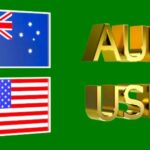US dollar fell as investors looked optimistic that the Fed will lower interest rates in September.
US Dollar (USD) fell in Friday’s early North American session after rising from a 10-day low on Thursday. The US Dollar Index (DXY), which measures the value of the US dollar against six major currencies, fails to maintain the recovery witnessed on Thursday, falling to around 102.75.
The asset saw selling pressure as investors remain hopeful that the Federal Reserve (Fed) will begin lowering interest rates from the September meeting. However, market expectations that the Fed will start its policy-easing cycle aggressively have been greatly reduced.
Traders trimmed their bets on the Fed lowering interest rates by 50 basis points.
Earlier, market traders began anticipating a 50-basis-point (bps) interest-rate cut from the Fed in September, citing concerns that the US would enter a recession.
According to the CME FedWatch tool, 30-day Federal Funds Futures pricing data suggests that the possibility of a 50-bps interest rate cut has dropped to 29.5%, down from 51% a week earlier. Bond yields impacted by widespread speculation that the Fed will decrease interest rates in September. Ten-year US Treasury yields fall to about 3.91%.
Meanwhile, Fed policymakers have conceded that interest rate reduction are now reasonable because threats to the labor market have increased. This week
Atlanta Fed President Raphael Bostic stated in an interview with the Financial Times (FT) that he is open to rate decreases in September. When asked about the size of the rate drop, Bostic stated that he is willing to decrease rates by half a percentage point if the labor market continues to deteriorate.
Daily digest market movers: US Dollar sees selling pressure despite Fed major rate-cut forecasts fading.
The US Dollar struggles to maintain its Thursday comeback, which was fueled by positive US economic statistics that allayed speculators’ fears of a recession.
The figures released on Thursday indicated that US retail sales increased at a rapid pace in July after declining in June. Retail sales, a crucial indication of consumer spending, increased sharply by 1% against Expectations are 0.3%, reducing fears of a severe landing.
Furthermore, fewer-than-expected Americans filing for unemployment benefits for the first time for the second week in a row suggested that labor market circumstances were not as terrible as they appeared following the release of July Nonfarm Payrolls (NFP) statistics. The US Department of Labor reported that Initial Jobless Claims were 227K, lower than projections of 235K and the previous announcement of 234K.
Investors will now focus on Fed Chair Jerome Powell’s address at the next Jackson Hole (JH) symposium, which will take place from August 22-24. Fed Powell is likely to deliver indications regarding the path of interest rate cuts as inflation stays on track to return to the goal rate of 2% The labor market is no longer hot.









